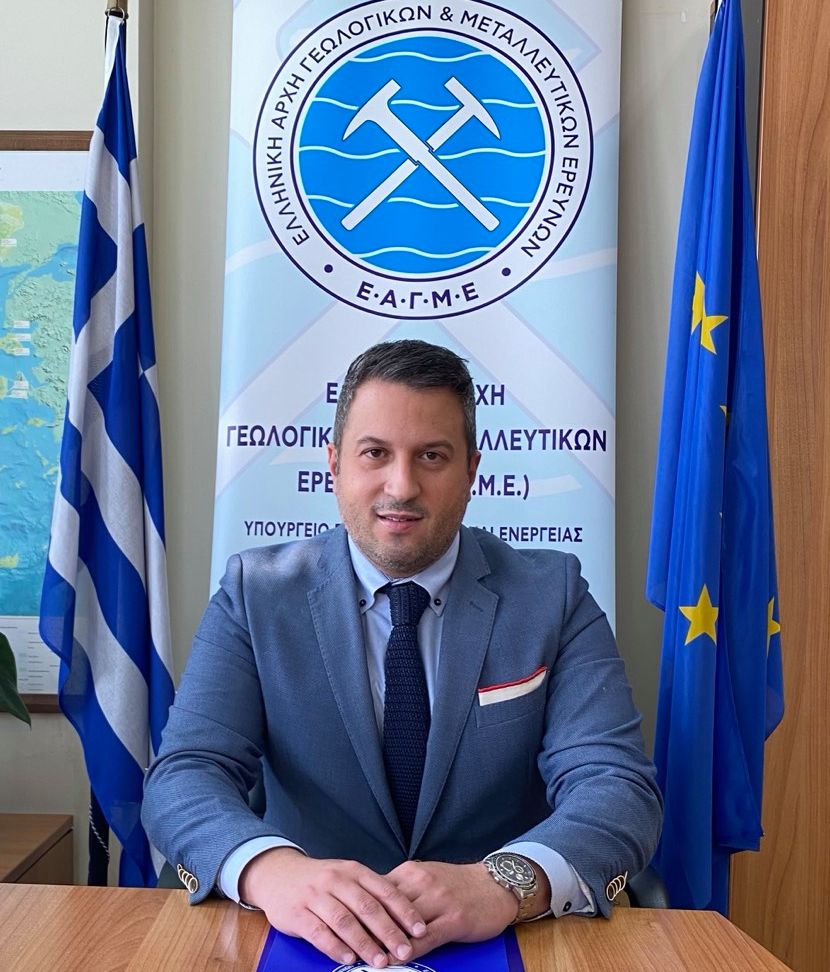The development of geothermal energy is a key national priority within the framework of the goals set by the National Energy and Climate Plan (NECP). According to the recently presented proposal for the NECP revision, an installed capacity of around 800 MW from “other RES” (excluding photovoltaic, wind, and hydroelectric plants) is foreseen by 2030—a category that includes geothermal energy. By 2050, the target rises to 2.6 GW.
Undoubtedly, we are facing a significant energy challenge, and the Hellenic Authority for Geological and Mineral Research (H.S.G.M.E.) is expected to play a leading role in this effort. The role of geologists is evolving, with the focus shifting to how they can decisively contribute to identifying, delineating, and utilizing geothermal fields that can support the growth of geothermal energy in Greece.
H.S.G.M.E. recently submitted to the Ministry of Environment and Energy a comprehensive technical report containing existing scientific data on areas of the Greek territory that are considered favorable for locating medium- to high-enthalpy fluids (>100°C). These areas meet the criteria for inclusion in a competitive process for geothermal exploration and exploitation. There are nine such areas across the country, of varying potential and outlook, with the most promising located in Northern Greece, particularly in Thrace, the Nestos region, and the Strymon basin.
At the same time, a recent decision by the Ministry of Environment and Energy officially “activated” the institutional framework for the utilization of the country’s geothermal resources for electricity generation, defining the procedure for leasing the rights of exploration, exploitation, and management of geothermal fields of national interest.
This marks the first step toward identifying and utilizing these fields for power generation. The next step will be to clarify procedures for fields of local interest—with temperatures up to 90°C—and to explore best international practices and establish specific incentives for geothermal development. Consequently, competitive tenders for geothermal exploration and future exploitation across Greece are expected to be announced soon, with primary focus on Central and Eastern Macedonia and Thrace, where the most promising geothermal areas are located based on available data.
In determining these areas, particular consideration will be given to the strong investment interest already expressed in the market. It should be noted that while geothermal energy is classified as a renewable source, it also serves as baseload power—a key distinction from wind and solar energy, which are intermittent by nature. As the world searches for sustainable energy solutions, exploring geothermal potential is an obvious path forward for countries endowed with favorable geological conditions—such as Greece.
Indeed, Greece possesses abundant geothermal resources, with significant high-enthalpy fields in the volcanic arc islands of the southern Aegean, and low-enthalpy fields mainly located in Northern Greece (Central and Eastern Macedonia and Thrace) and the Eastern Aegean (especially on Lesvos and Chios). This means that geothermal heat could meet a substantial portion of energy demand in areas where such resources exist.
For all of us at H.S.G.M.E., a major challenge—aligned with the imperatives of our time—is to design and implement targeted initiatives that will assess geothermal potential across Greece, identify new geothermal fields and zones of geothermal interest, and intensify the monitoring of existing geothermal sites.
Geothermal energy can and must become a stable source of clean energy, delivering multiple benefits to society, the economy, and the environment. It can reduce energy costs for households and businesses and can be applied across a wide range of sectors—from electricity generation and agriculture to spa and wellness tourism. Moreover, it will contribute to achieving national climate targets for reducing greenhouse gas emissions and transitioning to climate neutrality by 2050. The development of geothermal energy can play a decisive role in strengthening energy security, diversifying the energy mix, improving energy efficiency, reducing dependence on imported fossil fuels, and promoting renewable energy.
Beyond any doubt, this represents the environmental and energy vision for the future—one in which the H.S.G.M.E. of tomorrow stands as a trusted scientific institution with a decisive contribution to Greece’s national Energy and Climate strategy.
By Dionysios Goutis, General Director of the Hellenic Authority for Geological and Mineral Research (H.S.G.M.E.)
Source: Naftemporiki


